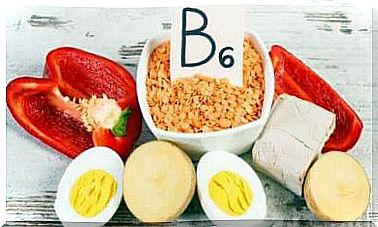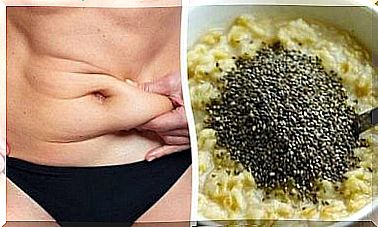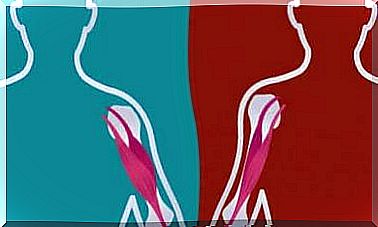Gastric Ulcers And Helicobacter Pylori
The bacterium Helicobacter pylori is found in over 90% of gastric ulcer cases. It can be transmitted through contaminated food and water. Find out what you need to know about it here!
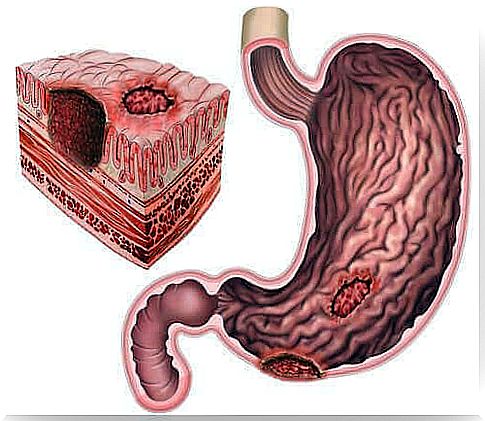
Stomach ulcers are a type of lesion that affects the gastroduodenal lining. Although the incidence of these ulcers is decreasing, they still affect a large part of the population.
The bacterium Helicobacter pylori is detected in more than 90% of all gastric ulcer cases. This is a type of bacteria that causes infections in the stomach.
Around two thirds of the world’s population carry this bacterium, which can spread through contaminated food and water.
Causes of gastric ulcer
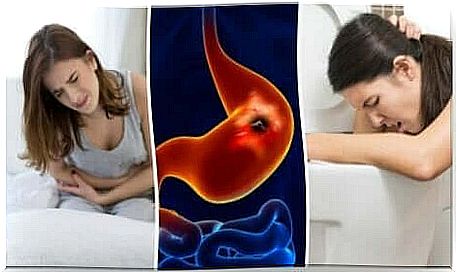
An imbalance between aggressive factors and protective mechanisms of the gastroduodenal mucosa causes most ulcers. This imbalance is secondary to Helicobacter pylori infection or the use of non-steroidal anti-inflammatory drugs (NSAIDs).
In the case of a stomach ulcer infected with Helicobacter, eradicating the bacterium can prevent relapse. However, only 10 to 20% of people infected with Helicobacter pylori will ever develop a stomach ulcer.
With long-term use of NSAIDs, 50% of those affected develop superficial stomach ulcers. In these cases, the ulcers are usually asymptomatic.
The risk factors for stomach ulcers when taking NSAIDs are:
- History of gastric ulcer
- Age (older than 60 years)
- The use of anticoagulants or corticosteroids
- High levels of NSAIDs
- Helicobacter pylori infection
There are no studies to suggest that smoking, stress, or diet are factors that cause stomach ulcers. However, smoking appears to have a negative impact on the healing process of gastric ulcers.
Stomach ulcers: symptoms and diagnosis
Most people who have a stomach ulcer will have symptoms of dyspepsia. So when patients have symptoms of dyspepsia, doctors suspect an ulcer. Symptoms include epigastric pain on an empty stomach that subsides with food or antacids.
Information about lifestyle, drug treatments, and personal medical history are important in making a diagnosis.
Some people develop an ulcer and gastroesophageal reflux disease at the same time, which can make diagnosis difficult. The most reliable and specific test to confirm the presence of an ulcer is a gastroscopy.
Stomach ulcers: treatment options

The goals of treatment are to relieve symptoms, heal the ulcer, and prevent complications. It’s also a good idea to follow some hygiene and nutritional measures, such as the following:
- Avoid using NSAIDs
- Do not eat or drink anything that is causing the symptoms
- Do not smoke as tobacco will delay the ulcer healing and
- Increased relapses
Antisecretory treatment
Proton pump inhibitors (PPIs) are currently the drugs that best help heal the mucous membranes. However, you should only take them if advised by your doctor.
They should be taken before meals. Also, some studies have shown that taking it in the morning is more effective than taking it late in the day. Proton pump inhibitors take 3 to 5 days to develop their maximum effect. However, there are differences in how liver metabolism responds to the drug.
The duration of treatment depends on the location of the ulcer. It lasts 4 weeks for duodenal ulcers and 6 to 8 weeks for gastric ulcers.
Eradication of Helicobacter pylori
The eradication of the bacteria leads to the healing of the ulcer. Long-term complications of the ulcer are also reduced.
The first choice for eradication treatment is the administration of antibiotics (especially clarithromycin, amoxicillin, and metronidazole) and a PPI for at least ten days.
In patients who are allergic to penicillin, PPIs, clarithromycin and metronidazole are usually used for at least 10 days.
Recommendations for taking NSAIDs for gastric ulcer
If there are risk factors for stomach ulcers, it is wise to consider the following recommendations before taking NSAIDs:
- Read the instructions for use: If the desired effect is pain relief or fever lowering, you should take paracetamol instead.
- Always take the smallest possible dose of NSAIDs and also choose the least toxic.
- Avoid taking NSAIDs, corticosteroids, and anticoagulants at the same time.
